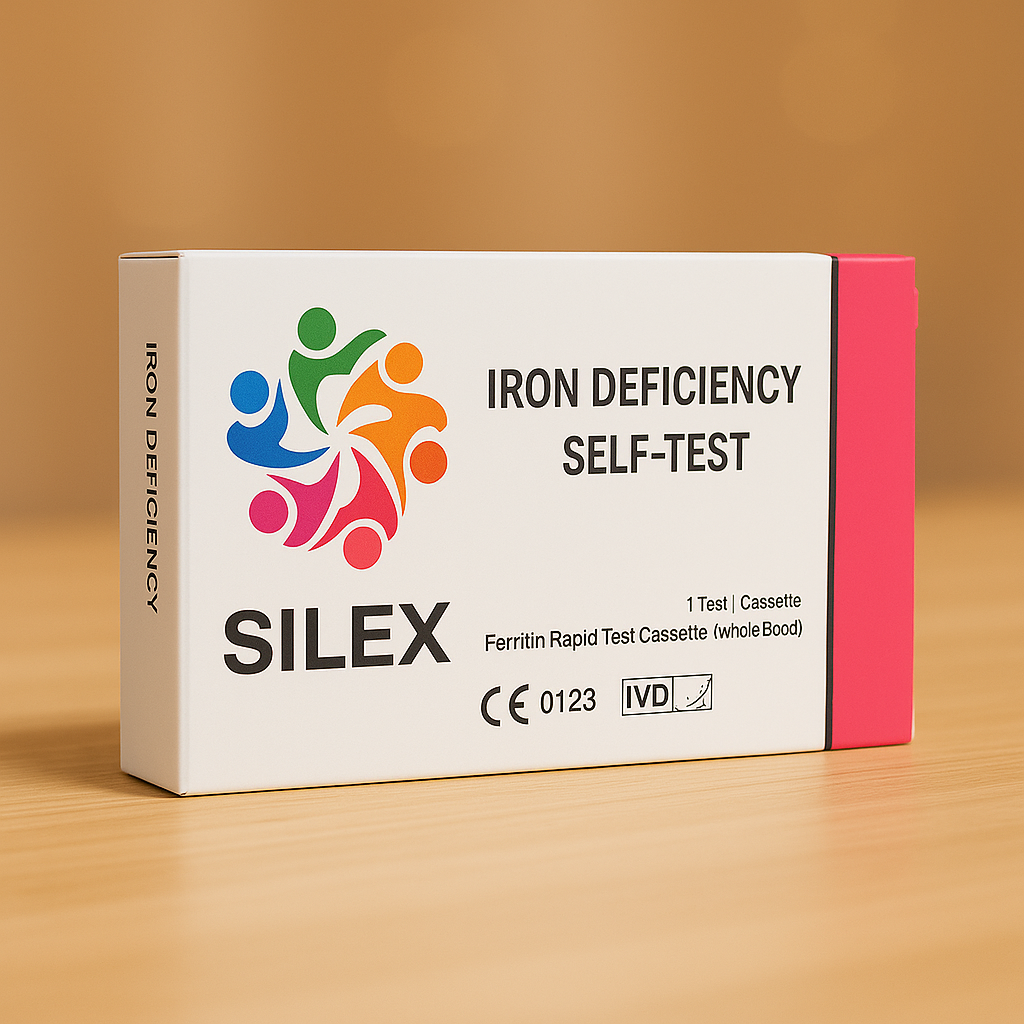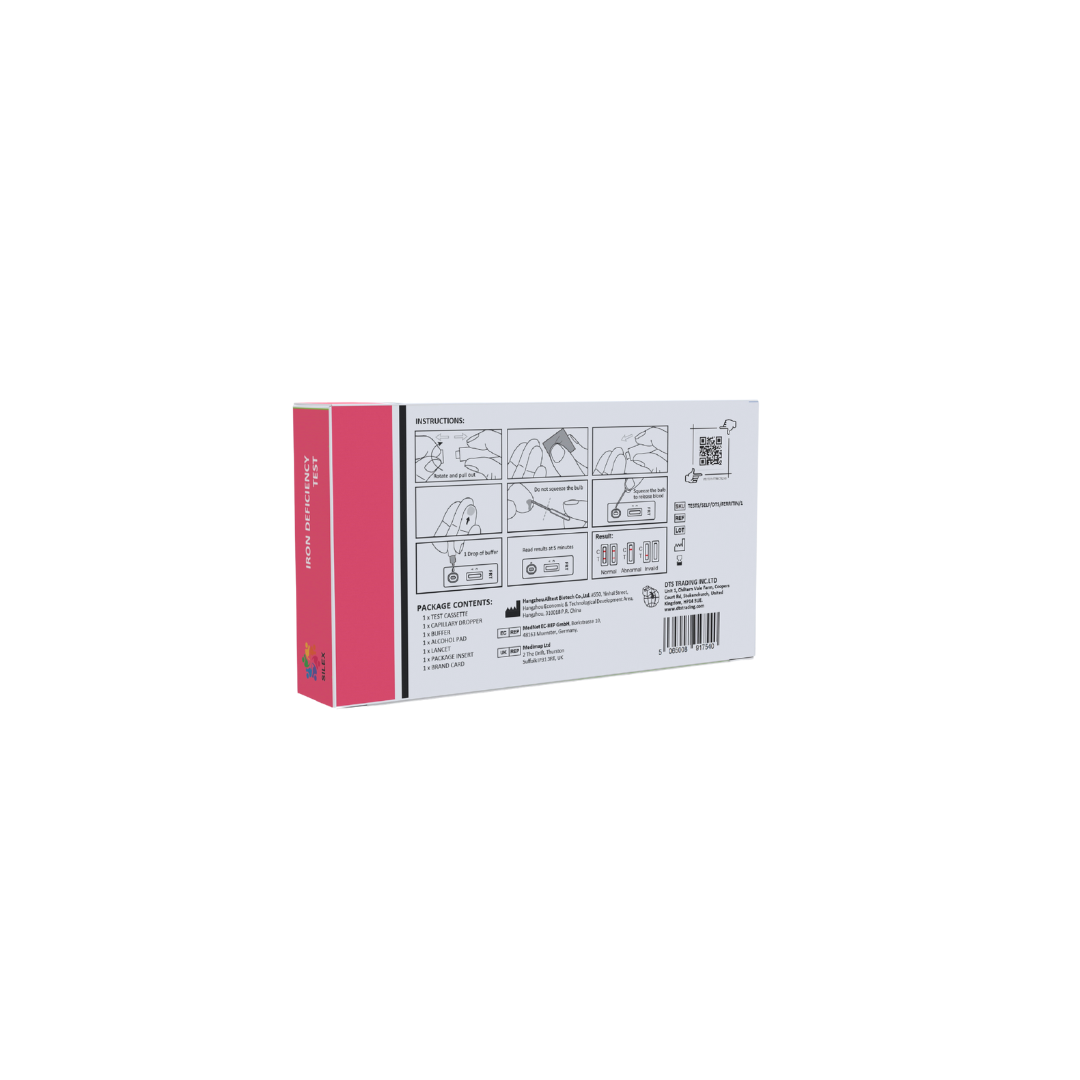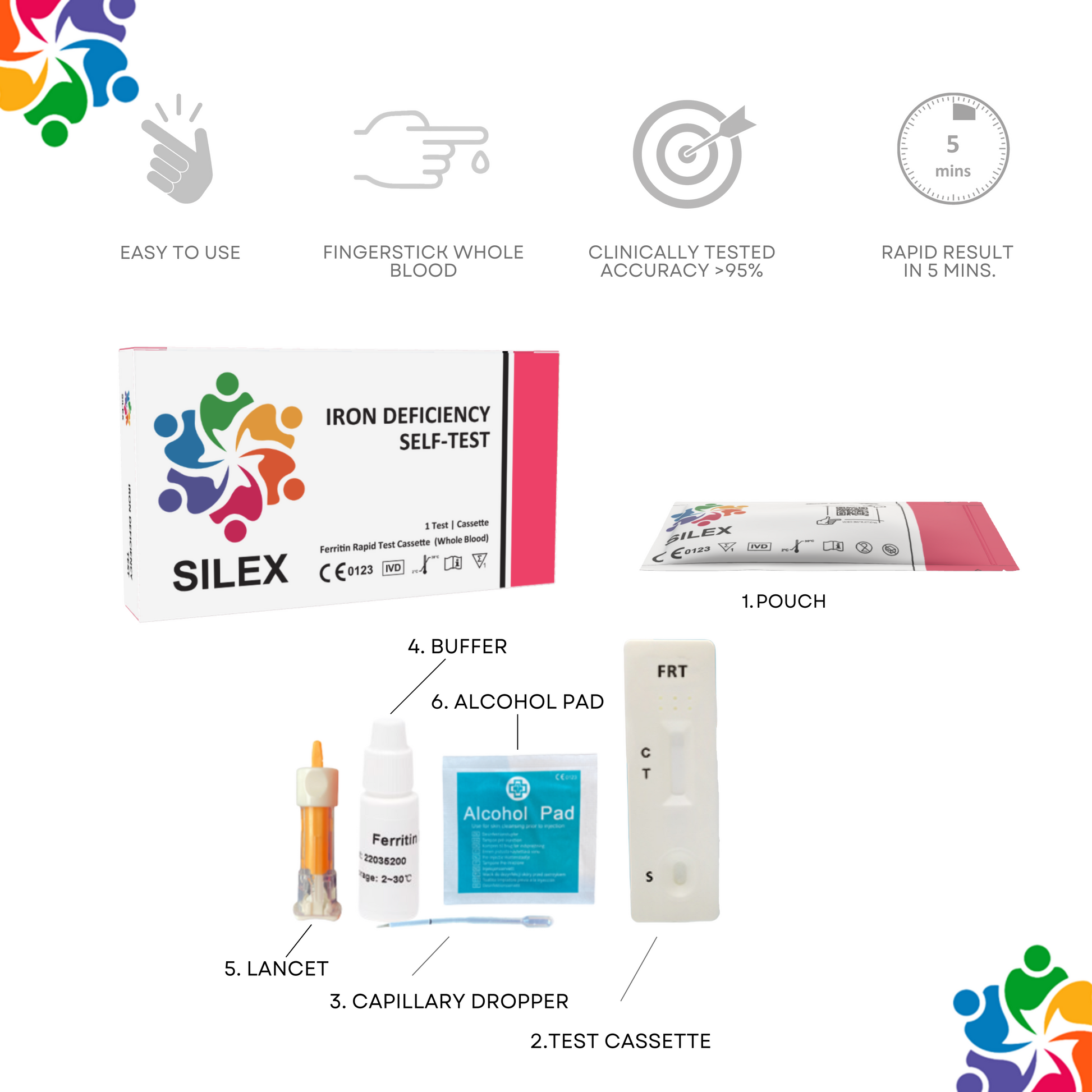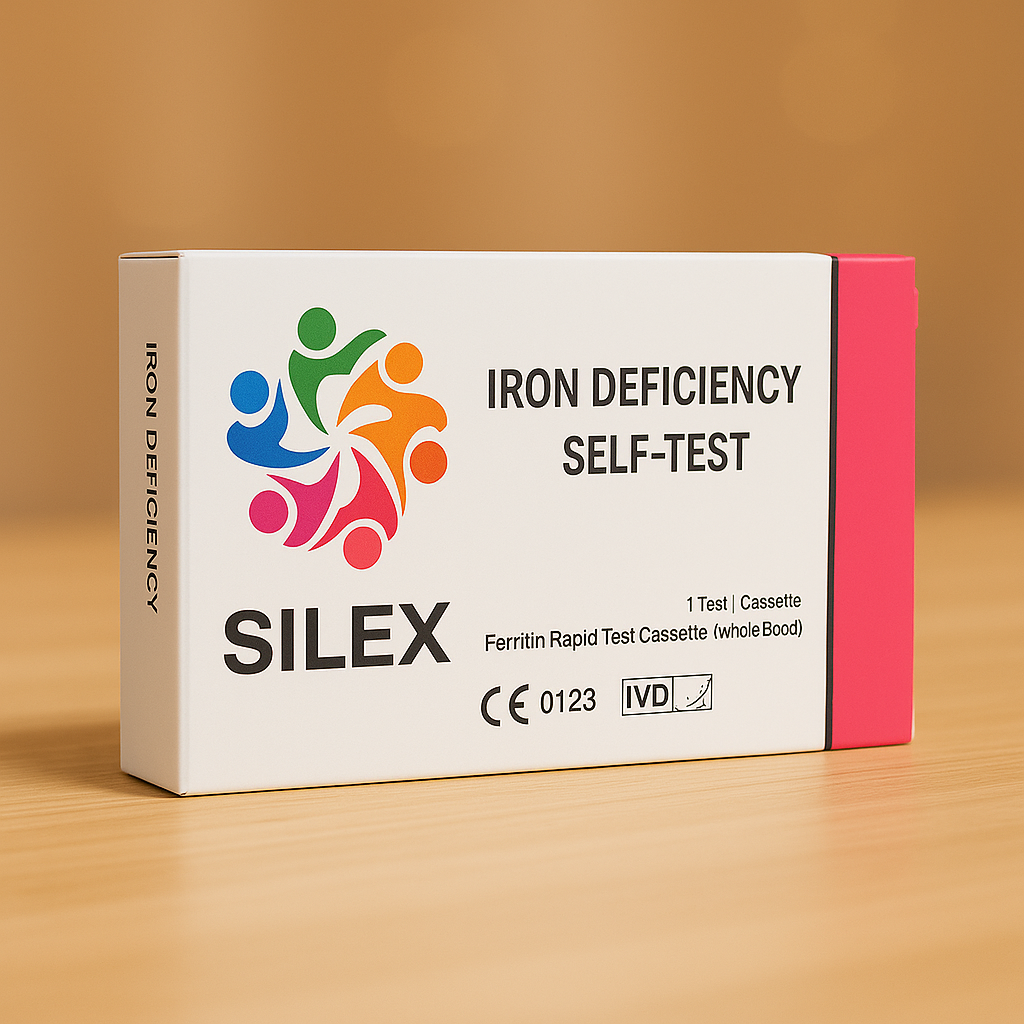

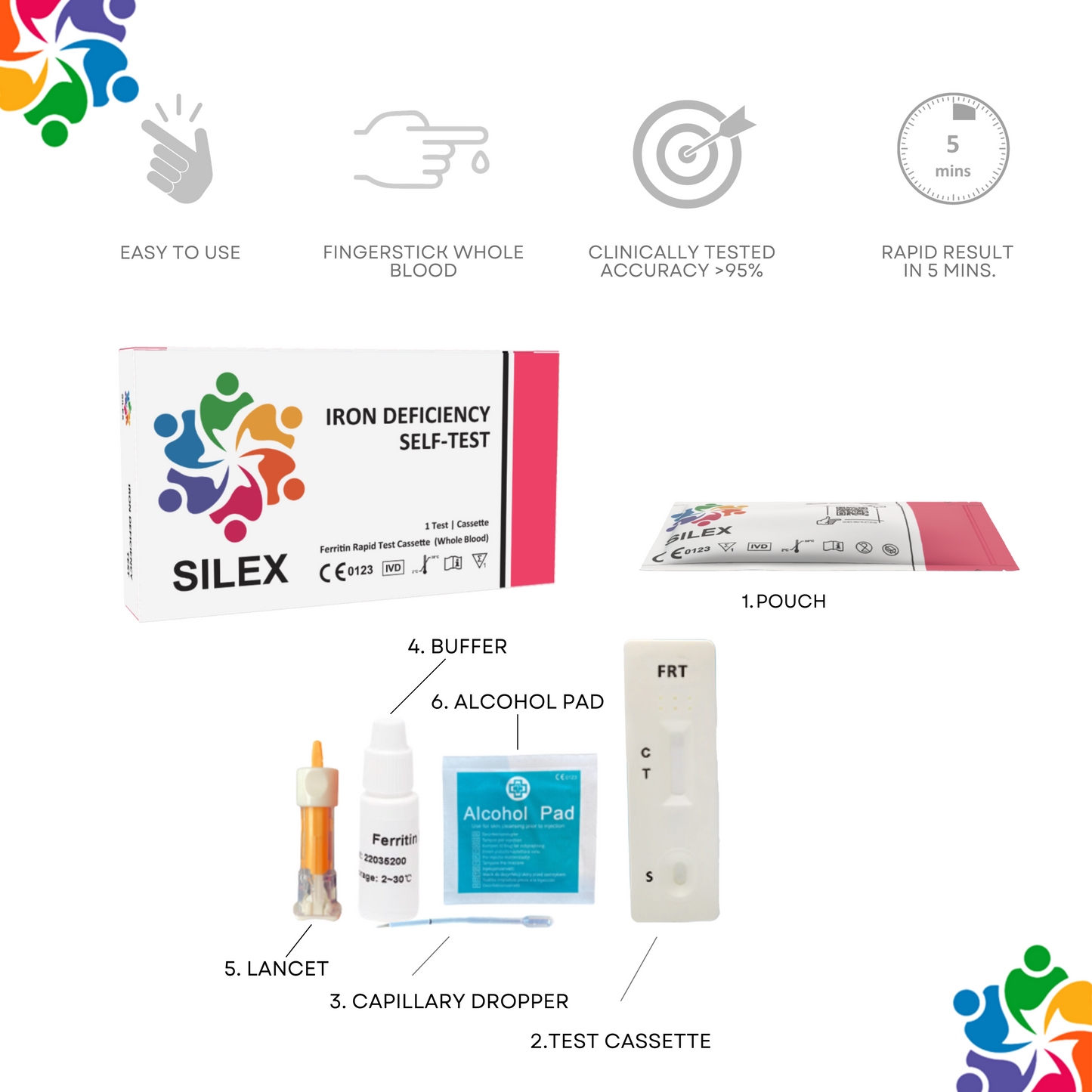
How to Use
- Wash hands with soap and warm water.
- Let the test pouch reach room temperature, then open it and remove the cassette.
- Remove and discard the lancet cap.
- Clean the side of your ring or middle fingertip with the alcohol pad.
- Press the lancet against the cleaned fingertip to prick it.
- Keep hand down and gently massage to produce a blood drop.
- Touch the capillary dropper to the blood (don’t squeeze); collect until it reaches the marked line. Avoid air bubbles.
- Squeeze the dropper to dispense blood into the cassette’s sample well.
- Add 1 drop of buffer to the same well.
- Wait 5 minutes and read the result. Do not read after 10 minutes.
Iron Deficiency Symptoms
If you are iron deficient, then you can experience a wide variety of symptoms. These include:
- Tiredness
- Becoming fatigued quickly during exercise.
- Looking pale
- Memory problems
- Brittle hair and nails
- Poor concentration
- Getting out of breath quicker than normal
- Slow wound healing

